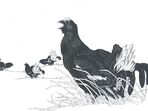Animals
Two types of action plans are being prepared for threatened animal species. First are the Action Plans designed for species threatened by extinction. The second type are Management Plans designed for species not in an immediate danger of extinction, but belonging to so called “conflict species”. Both types of plans are being prepared in a similar way, and also their logistics are similar. They differ mainly in the kind of proposed measures – Management Plans entail a greater deal of administrative, research and educational ones.
Selection of species nad preparation of Action Plans
Selection of species for which Action or Management Plans are prepared is done based on given criteria. Texts of the plans are written along a binding outline, the purpose of which is a uniform and thorough elaboration of each Action or Management Plan in question. All prepared Action and Management Plans are reviewed by at least two independent experts.
Logistic
According to the Act no 114/1992, Action/Management Plans for critically endangered and endangered species are guaranteed by the Ministry of the Environment. In practice it means approving the list of species for which an Action/Management Plan should be prepared, approving the binding outlines and the Action/Management Plans themselves. The Nature Conservation Agency of the Czech Republic (NCA CR) was authorized to prepare and coordinate the Action/Management Plans. All related tasks are shared by employees of the directorate of this organization and employees of its regional offices and Protected Landscape Area Administrations. Preparation of new Action/Management Plans as well as implementation of approved plans is guaranteed by experts for the given species (either from NCA CR or externs) under the coordination of the directorate of NCA CR. Employees of regional offices of NCA CR and of regional authorities also participate in the Action/Management Plans. They administrate the implementation of specific management measures, usually carried out by specialized companies, non-governmental organizations or other corporations or individuals. An advisory board is appointed for each Action/Management Plan: this is a broader group of experts and interested individuals, who meet at least once a year to consider and discuss the progress of the plan´s implementation.
Illustation author: Jan Hošek.
Accepted Action Plans
Scarce Fritillary

Euphydryas maturna
Scarce Fritillary is a critically endangered species of sparse, sunlit decidious woods in lowlands and uplands. For its protection, especially management of suitable habitat, which is constituted of early successional stages of forests with low canopy closure of tree storey and with rich herbaceous and shrubby storey, is necessary. Therefore, to save this species, there is a need for re-establishing coppice management (growing low/coppice forests).
Freshwater Pearl Mussel

Margaritifera Margaritifera
Already in 1941, when a paper “On the Protection and Biology of the Freshwater Pearl Mussel” was published, Prof. Václav Dyk called upon the Czech conservationists to “....guarantee the care for the remaining pearl mussel habitats as quickly as possible.”
European Ground Squirrel

Spermophilus citellus
From economic pest to endangered species. "In the first years following World War II., the European Ground Squirrel together with the Common Vole were responsible for a lot of demage in our renewing national economy. The fight against pests was not bringing expected results....." (Grulich, 1960).
Little Owl
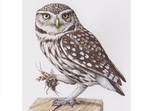
Athene noctua
Little Owl, the inseparable guide of the Greek goddess Pallas Athena, has always been a part of human history and culture. However, a close unity with human culture or farming can be very tricky for any animal species.
Aesculapian Snake

Zamenis longissimus
It is a snake with probably the oldest known European tradition. It was consecrated to the Greko-Roman god of medicine Asklépios (Aesculapius in Latin) and is depicted on antient things over 2 500 years old. Until today, the Aesculapian Snake is part of the physicians´ emblem (a snake wound round a chalice), and its name is used in modern times for example in the names of bars, spas or a credit accounts of doctors.
Oak Jewel Beetle

Eurythyrea quercus
Oak Jewel Beetle is a large metallic-shiny beetle, usually between 14 and 22 mm long. It is one of our most beautiful and also most endangered beetles.
Stone Crayfish

Austropotamobius torrentium
Accepted Management Plans
Eurasian Beaver

Castor fiber
Eurasian beaver is a protected animal species that from historic point of view definitely belongs to our fauna. It is moreover fascinating by its ability to actively change the character of its environment. This fact unfortunately led in the past – together with other "beaver attributes" such as fur or castoreum – to strong dependence of beavers on human will to tolerate them in cultivated lands.
Eurasian Otter

Lutra lutra
Eurasian Otter is an endangered species in all of Europe: it has become a symbol of the declining wildlife, but also a symbol of efforts to protect the biodiversity of wetland and river ecosystems.
Wolf

Canis lupus
Together with the lynx and the brown bear, the wolf belongs to native species of our mammalian fauna, which occurred in historical times throughout the territory of the Czech Republic. However, due to gradual deforestation of the landscape, settlement expansion and primarily due to direct persecution by man, this species was gradually exterminated at the turn of the 19th and 20th centuries not only in the Czech Republic, but also almost in the entire Central Europe. In recent decades, the wolf has again returned to our territory.
Action Plans in Preparation
Eastern Eggar
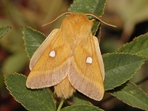
...
Great Bustard

Otis tarda
Great Bustard is a vulnerable species on a world-wide scale, in the Czech Republic classified as critically endangered. Protection of the disappearing central-european population of Great Bustard can – due to considerable space requirements of the species - only be successful when it is done in coordination with other neighbourring countries at a large-area level. Ensuring such conditions is the subject of a Memorandum implemented under the patronage of the Bonn Convention.
Woodland Brown
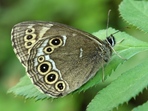
...
The Hermit
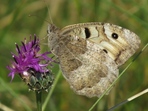
...
Saker Falcon

Falco cherrug
Saker Falcon is – from the global point of view – one of the most endangered animal species occuring in the Czech Republic, listed by IUCN in the category EN (endangered species).
Natterjack Toad
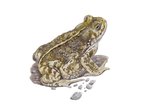
Epidalea calamita
Natterjack Toad is a beautiful greenish-spotted amphibian, with a typical light stripe along its spine (that is the unequivocal sign to distinguish it from otherwise quite similar-looking but much more abundant Green Toad).
Black Grouse
